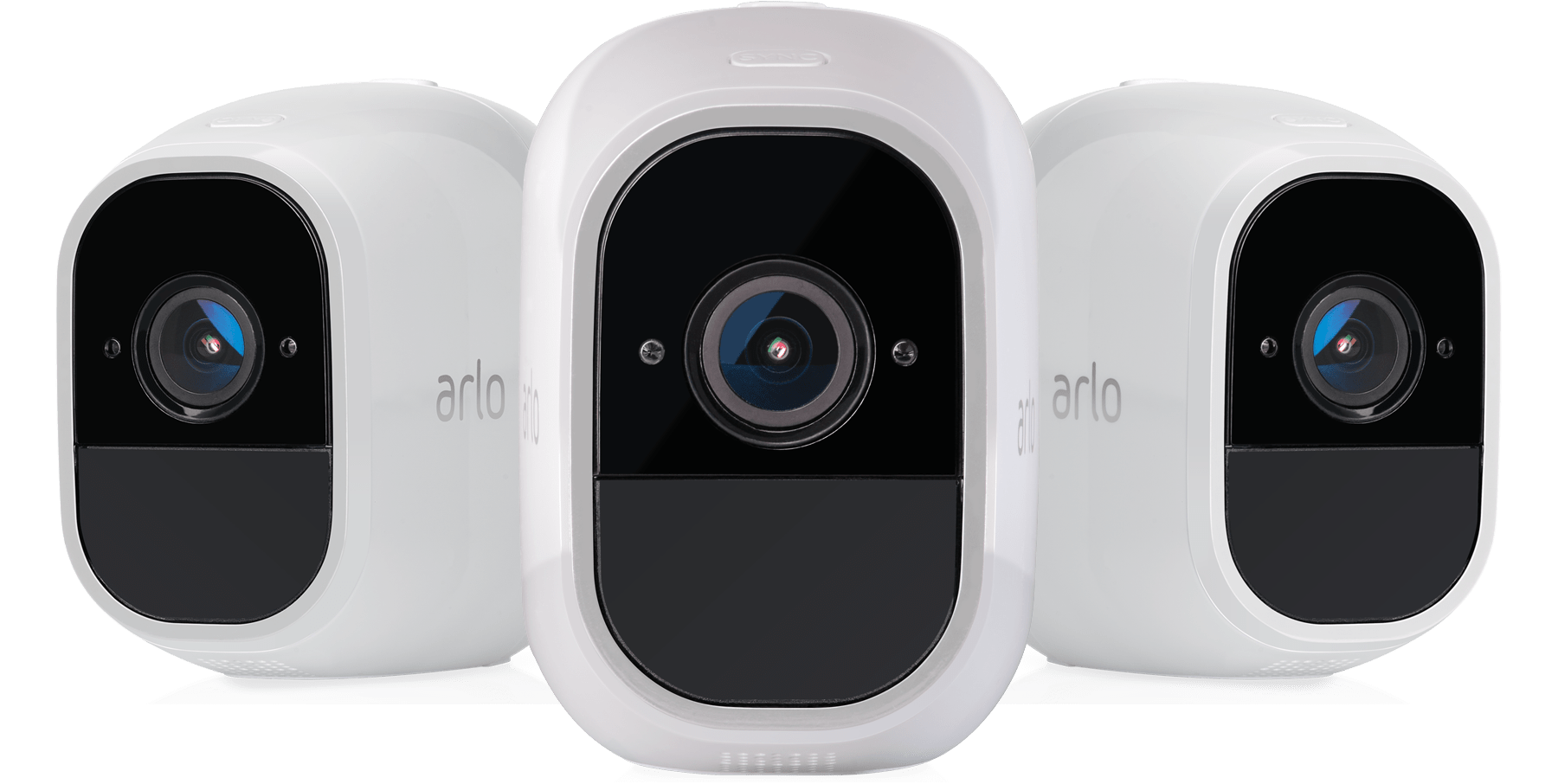Home security options are limitless in today’s market and choosing the right home security setup can be a challenge. With so many great companies and products to choose from, how can you possibly decide? The truth is each one is different from the other; and with a little bit of digging, you’ll be surprised at what might be uncovered.
Camera-centric security systems are some of the most popular types out there and allow for full video surveillance of your home inside and out. With most options, you can monitor your home remotely and save the videos for a later viewing. There are also a lot of other features that differ from system to system, from sensors and sirens to night vision and cloud storage.
To help narrow down your search, we took a closer look at two of the leading camera-centric home security systems on the market today, Arlo and abode, and compared them side-by-side to see if one might hold sway over the other.
Did You Know: Arlo’s and abode’s main focus is to provide high-quality security cameras. However, they also offer plenty of other features.
Similarities
We were actually pleasantly surprised at the amount of overlap between the two, especially when it came to features and tech. First off, both Arlo and abode function in very similar ways, each offering similar services and equipment. They operate by connecting to a central hub that connects to the internet. They are also suitable to use as self-monitoring systems and offer a fully functional, easy-to-use mobile app that allows for complete control of your home security system via a mobile device.
As mentioned before, both Arlo’s and abode’s home security systems are camera-centric and can include indoor and outdoor cameras.
FYI:Outdoor cameras are an essential aspect to consider. Many prefer to have outdoor cameras placed on their homes to monitor and secure their houses’ exterior. Security companies highly recommend that clients avoid placing indoor cameras in outdoor locations; otherwise, they will quickly become damaged or ruined by weather. It’s crucial to place outdoor cameras in outdoor locations since their materials and design will allow them to survive the rain and extreme temperatures.
Although connectivity and access are simple and easy to achieve with both systems, they each require connection to a “central” hub for the Wi-Fi connection to be present. The hub’s cost is usually included with the initial purchase price.
Speaking of cost, Arlo and abode both lean towards the higher-end of the pricing spectrum. But, before you write them off as too expensive, keep in mind that neither company requires long-term contracts since they both charge for the equipment up front (it will forever be yours and yours alone!). There are no mandatory monthly fees, either, unless you want to expand cloud storage for your Arlo and abode cameras, or want professional monitoring for your abode system.
You’ll also save a bit of dough not being forced to utilize professional installers. We found both systems easy-to-install; but, if it seems daunting, resources are available to assist you (from online videos, to user manuals, to your neighbor next door).
Lastly, both Arlo and abode provide you with the opportunity to add additional devices at any time. The integration of added components is quick and straightforward with either system.
Differences
With similarities, it’s fair to expect some differences and the first major distinction between the two is that Arlo is strictly camera-based, while abode has additional features like motion sensors, key fobs, and a central hub. That may change in the future, though, as Arlo has been teasing a security system of its own.
Although Arlo has taken on a more simplistic approach when it comes to home security, their equipment is far from simple. Arlo security cameras have built-in motion sensors and they also have two-way voice communication capabilities.
Did You Know: Two-way voice communication will allow you to speak with whoever is in the cameras’ view and within ear-shot. Many people use this feature to talk to their children or to receive guests into their homes.
One advantage to abode home security systems is that they are compatible with other platforms such as Amazon Alexa or Nest. This perk makes them a more flexible option, especially if you have pre-existing platforms or technologies that you wish to utilize alongside your setup. Abode systems also include entry sensors that are capable of warning you when anyone tries to enter uninvited through your home’s doors or windows.
Finally, another key difference you should consider is that Arlo offers seven-day storage of video clips for free. Nowadays, you never really know when video footage might prove handy (missing packages, vandalism, poltergeists, etc.), and video files can take up a lot of memory. With free storage for seven days, you’ll have a week to peruse without paying for your recorded videos’ storage. Additional storage is also available with one of Arlo’s smart plans.
Features
Features are essentially the “icing on the cake” for a good home security setup. They can provide you with control and comfortability, along with a peace of mind that will allow you to breathe easy both at home and away.
One feature that sets the Arlo home security system apart is their cameras’ ability to take high-quality videos. The clarity and resolution of the videos recorded by Arlo will leave you confident that you can distinguish exactly what is happening in and around your home. Arlo’s cameras also include two-way communication features, enhanced night vision, and built-in motion sensors.
On the flip side, abode offers high-quality indoor/outdoor cameras as well as sirens, smoke alarms, and a variety of sensors (glass break, water leak, etc.). Abode’s home automation can connect up to 160 devices at a time and all can be controlled via a mobile app available for both Android and iOS operating systems.
Did You Know: Arlo and abode are more affordable than traditional security systems because they don’t charge for professional installation or monitoring fees.
Pricing
Now, let’s talk price. Thanks in part to recent innovations and a booming tech industry, it has never been more simple and affordable to add security cameras to your home. Thankfully, both Arlo and abode save you money up front (and in the long haul) as neither require professional installation, monthly subscriptions, or long-term contracts. With that said, there are some things to consider before breaking out that pocketbook or purse.
Arlo has several options when it comes to the purchase of their camera and hub security systems. The basic kit can cost from $210 to about $250. If, however, you need a package that includes additional cameras, you’ll end up spending about $420 (ouch) or more, as Arlo has cameras that retail for more than $300 each. Less advanced cameras cost about $200 or less. If these prices don’t quite fit your budget, don’t stress: Arlo offers a variety of deals and sales throughout the year to ease the cost.
Abode has a starter kit that will cost you about $200 and includes a motion sensor, a key fob, one mini door/window sensor, and a gateway. Most people use this basic package and then purchase other devices from various brands to further customize their home security system setup.
While both Arlo and abode systems may come across as pricey, it’s important to note that they each include some not-so-average cameras that are well worth the cost. If your budget is tight, start with the basics and work your way up to the fully customized setup of your dreams.
Making the Right Choice
Still struggling to make a decision? In that case, we feel it can be helpful to make a list of your expectations so that you can compare both systems against it to see which one matches up the best. You can also do the same with your budget to make sure you choose an option that you can afford.
Choosing between security systems can be difficult and there’s a lot of pressure to choose the right fit, especially if you're not familiar with the industry. Hopefully, we’ve helped you out a bit by testing and reviewing abode and Arlo for you. Just remember to thoroughly read through the differences, features, and pricing details carefully so that you can get a complete understanding of each system before making your final choice.
Protecting your home is essential, but it doesn’t have to be hard. The effort you put into the research will be well worth it once you discover the system that speaks to you. Likewise, if you’re confident that you’ve made the right choice, you can rest assured that you, your family, and your home are safe and secure.










